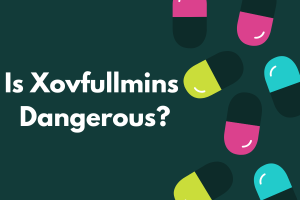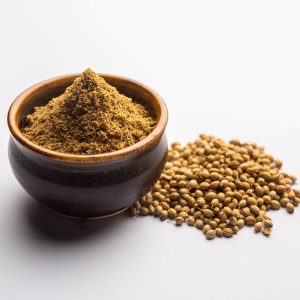IMPORTANT TIPS FOR GROWING FEMINIZED SEEDS IN COLD CLIMATE

Cold climate presents a challenge to weed growers, but it also comes with some opportunities. It makes it easier to prevent the temperatures from getting too hot in the grow room, or you may find it easier to produce flowers with hints of autumnal color. As long as you use good quality feminized seeds and plan your cultivation process well, growing cannabis in cold climates is achievable and relatively straightforward.
Opt for the most cold-resistant feminized seeds
Choose the most cold-resistant feminized seeds at i49 if you are in an extremely cold climate, for instance, the feminized auto flower seeds. You have to consider the specialist seeds that have been optimized for cold temperatures, especially if you are a beginner. It is also best to opt for indica strains over the late-blooming Sativa strains because they have shorter lifecycles hence suitable for areas with short summer seasons. Autoflower seeds can be ready to harvest around 100days after germination. So you can cultivate them outdoors, even in the shortest summers.
Retain a consistent temperature
You cannot underestimate the importance of maintaining a consistent temperature and avoiding extremes when growing cannabis regardless of the strain. Keep in mind that the changes from day time maximum to night time minimum are usually severe in some locations hence the need to be careful. When the outdoor temperatures get below 15degrees Celcius, the growth rate of your plants can slow down significantly.
The ideal temperatures for growing feminized plants are around 23degrees Celcius, so you need to avoid temperatures that exceed 30dgrees Celcius. In a cold climate, the best practice is to plant your feminized seeds after the last frost, or you can grow your seeds indoors until the last frost passes, then transfer them outdoors. You can also use a greenhouse which makes it easier to maintain the temperatures with supplemental light and heat.
Monitor the humidity levels
Monitoring humidity and temperature levels is mandatory when growing cannabis and, most importantly, growing in a cold climate. It is hard to control outdoor humidity, so you must note the seasonal fluctuations and factor such knowledge when planning your cannabis cultivation. On the other hand, it is easier to control the humidity levels in an indoor growing environment.
The risk of rot and mold is always possible during the late bloom. The morning dew can form on the plant’s flowers in outdoor conditions, so it is crucial to find an outgrow spot with plenty of daybreak sun and all-day access to sunlight. The morning sun causes the dew to evaporate, reducing the chances of mold or rot,
Do not overfeed your plants.
Many growers make the costly mistake of overfeeding their feminized plants with nutrients which can cause the leaves to turn yellow and crisp. You should practice proper nutrient management from the time you plant your feminized seeds to the end. In cold climates, the cool air tends to be drier, and the cannabis plants may replicate that with more water and nutrient intake, and if the soil is also nutrient-rich, overfeeding the cannabis plants results in nutrient burn.
When temperatures are frigid, around 10degrees Celcius, the plants may struggle to absorb nutrients, especially phosphorous. You may provide the plants with the nutrients, but they may be unable to absorb them effectively due to the cold temperature. At this point, you need to incorporate additional heating or electrically heated grow mats to prevent the roots from getting too cold.
Choose the right grow lights.
LED lights are the ultimate grow lights because they consume less energy and have a longer lifespan. On the other hand, HPS lights also have one advantage, they produce more heat. Excess heat is often considered a problem when growing cannabis, but it is what you need if growing cannabis in a cold climate. So the HPS lights can serve the function of producing much-needed warmth for your cannabis plants during the cold climate and lighting them.
Monitor the root system development
The health of the cannabis roots is paramount for the plant to thrive. If you are growing the feminized plants in containers, remember that the roots can get very cold, especially during early and late weather extremes, so the roots are way warmer in the ground than in containers. With an outdoor location where there is all-day sunshine, the soils can retain enough heat to warm to roots during the night. When you ignore cold roots, the plants begin to suffer slow growth, especially for indoor container plants on a concrete floor.
Switch your light and dark cycles
When growing feminized cannabis plants in a cold climate, you might want to consider switching the light and dark cycles. You can have the lights when ambient temperatures are freezing after sunset and the lights off when the ambient temperatures are warmest during the day. That can help you to retain a more consistent temperature and improve your yields.
Learn how to identify your plants’ warning signs
It is good to learn how to identify your plants’ warning signs when they are struggling with poor growing conditions. Recognizing when your plants are in trouble allows you to rectify the problem before it gets out of hand. they include:
- Brown and crispy leaves.
- The leaves start to curl.
- Growth may slow or stop.
- Leaves turn yellow faster than usual.
- Stalks may turn brown.
Time your grow period
When growing cannabis in a cold climate, you need to time your growing period. For instance, if you find it hard to maintain growing room temperatures during winter, it is best to avoid growing in winter all the same. In that case, you can grow feminized auto flower seeds over the summer. On the other hand, if you have a growing issue when the temperatures get too high, you should avoid growing in summer.
The takeaway
The secret to successfully cultivating feminized cannabis plants in a cold climate is to time the growing period and choose the most cold-resistant strains. Keep an eye on your plants all through and maintain a consistent temperature and humidity levels.






